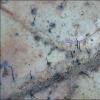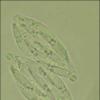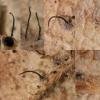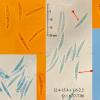
09-12-2025 12:06
 Andgelo Mombert
Andgelo Mombert
Bonjour,Je recherche l'article concernant Hypobryo

07-12-2025 16:07
Arnold BüschlenHallo, ich habe in einer Moos-Aufsammlung (epiphy

08-12-2025 21:04
Mark Stevens"Hello everyone,I'm relatively new to microscopy (

08-12-2025 18:59
 Lothar Krieglsteiner
Lothar Krieglsteiner
.. found by a seminar-participant, I do not know t

08-12-2025 17:37
 Lothar Krieglsteiner
Lothar Krieglsteiner
20.6.25, on branch of Abies infected and thickened

16-03-2014 22:00
Hello,I found this species a few months ago but ha

08-12-2025 13:39
Thomas Læssøehttps://svampe.databasen.org/observations/10572899
Gnomoniaceae
Garcia Susana,
06-05-2013 18:38
This gnomoniaceae grows abundantly on leaves of Quercus.
Size: 350 - 400 x 280-350um. Neck 900-1300 x 45-50.
Asci: 30-33 x 9-13um. Apical apparatus 2um
Spores: 13-15 x 2-3um, noncentral septum (60% -40%). With small appendages (2-3um) at the ends.
Initially I thought it was Ophiognomonia setacea, but lacks the central septum. It looks like gnomnia incrassata, but the neck is long and slightly smaller spores, and the host is Quercus.
Do not know whose it is?
Can anyone identify the species?
Thanks in advance
Susana (Spain)?
Alain GARDIENNET,
06-05-2013 18:46
Re : Gnomoniaceae
Gnomonia kisslingii.
Very good !
Alain
Very good !
Alain
Enrique Rubio,
06-05-2013 20:05
Re : Gnomoniaceae
Buen trabajo y buenas fotos, Susana. Una especie muy interesante que los que no la conocemos deberemos buscar en los nervios foliares principales de los robles ya que según Monod éste es el lugar adecuado para encontrarla.
Thank you, Alain!
Thank you, Alain!
Garcia Susana,
06-05-2013 22:18
Re : Gnomoniaceae
Thanks for the identification Alain.
Gracias Enrique, pero creo que no es dificil encontrarla, de hecho, he recogido al azar hojas de roble (en bosque mixto con pino) en lugares distintos y en casi todas estaba presente (comprobando al micro). Esto es en Sarasibar (Navarra), una zona que creo ya has visitado.
Saludos.
Susana
Gracias Enrique, pero creo que no es dificil encontrarla, de hecho, he recogido al azar hojas de roble (en bosque mixto con pino) en lugares distintos y en casi todas estaba presente (comprobando al micro). Esto es en Sarasibar (Navarra), una zona que creo ya has visitado.
Saludos.
Susana
Enrique Rubio,
06-05-2013 22:46
Re : Gnomoniaceae
Intentaré encontrarlo porque hasta ahora el Gnomoniaceae habitual en hojas de roble era Ophiognomonia setacea. Ahora que he sabido que existe este otro es sólo cuestión de explorar más hojas y tratar de encontrarlo.
Gracias Susana
Gracias Susana
Alain GARDIENNET,
13-01-2014 07:45
Re : Gnomoniaceae
Hi spanish friends,
Last week, I have collected easily this Gnomonia. Same features, and I also can note appendages, feature not seen in swissen collections.
It should be G. kisslingii. But I send it to Donny Walker in order to have its molecular sequency.
Best wishes,
Alain
Enrique Rubio,
13-01-2014 21:27
Michel Hairaud,
27-03-2025 18:47

Re : Gnomoniaceae
Bonjour,
J'ai aussi trouvé cette espèce , cependant, je lis dans la monographie de Monod que les spores sont dépourvues d'appendices .
Y a t il eu confirmation ultérieurement à sa publication que G. kisslingii a bien des appendices ?
Amitiés
Michel
J'ai aussi trouvé cette espèce , cependant, je lis dans la monographie de Monod que les spores sont dépourvues d'appendices .
Y a t il eu confirmation ultérieurement à sa publication que G. kisslingii a bien des appendices ?
Amitiés
Michel
Alain GARDIENNET,
28-03-2025 07:48
Re : Gnomoniaceae
Salut Michel,
Rien de neuf depuis cette mointaine époque. Donald avait arrêté les Gnomoniaceae. Le sujet mériterait d'être creusé.
Alain
Rien de neuf depuis cette mointaine époque. Donald avait arrêté les Gnomoniaceae. Le sujet mériterait d'être creusé.
Alain






